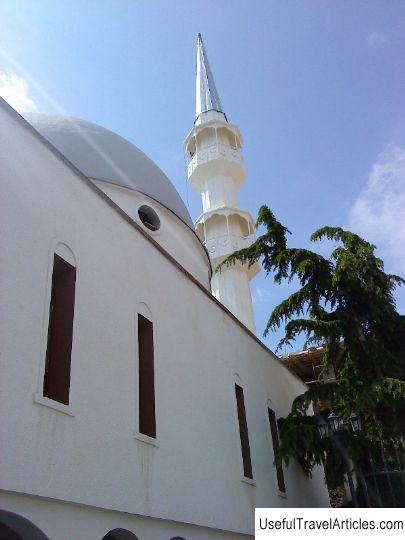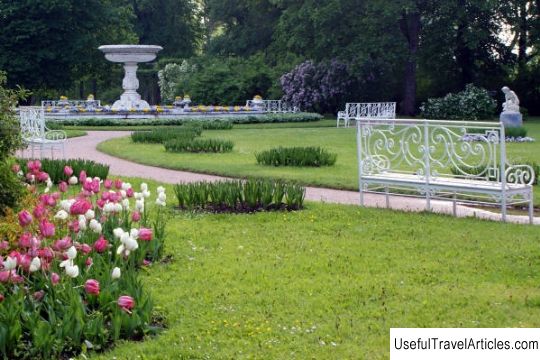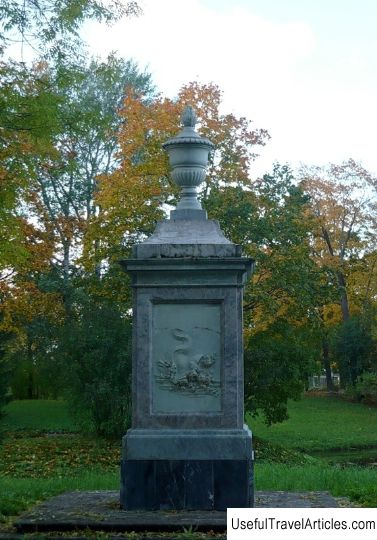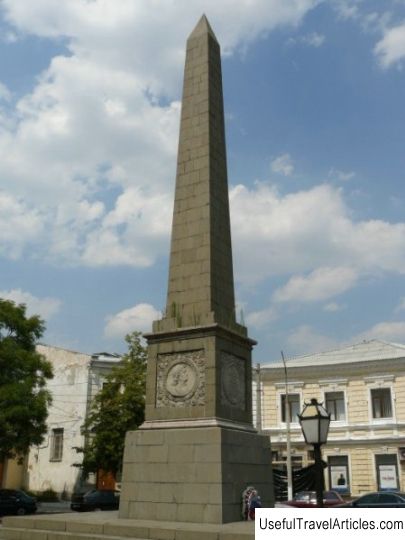Cahul obelisk description and photo - Russia - St. Petersburg: Pushkin (Tsarskoe Selo)
Rating: 7,7/10 (565 votes) 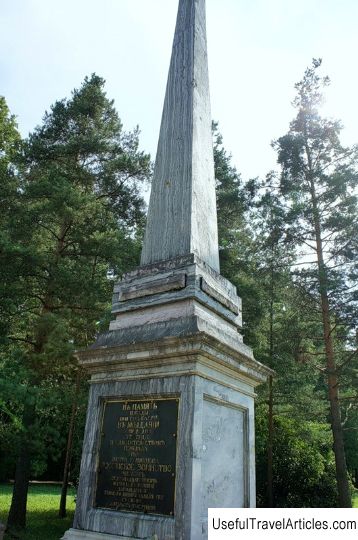
Cagul obelisk description and photo - Russia - St. Petersburg: Pushkin (Tsarskoe Selo). Detailed information about the attraction. Description, photos and a map showing the nearest significant objects. Photo and descriptionThe Cahul obelisk is located at the southern facade of the Zubovsky wing in the Private garden of the Catherine Palace. The obelisk was built in 1771-1772. architect Antonio Rinaldi. A monument was made at the St. Isaac's office. The obelisk and the pedestal are made of gray veined Siberian marble; the steps to the obelisk are made of red Tivdian marble; plinth and stylobate - pink granite; a memorial plaque with a commemorative inscription - made of bronze. The inscription on the bronze plank of the pedestal facing the palace informs that the obelisk was erected in honor of the victory of Russian troops over Turkish troops on the Cahul River. & nbsp; In August 1770, when a detailed report was received about the victory and flight to the Danube of the Supreme Vizier Galil-Bey with an army brought by Colonel Peterson, Catherine II herself drafted an inscription on an obelisk in memory of the victory of Count Rumyantsev in Moldova on the Cahul River on July 21, 1870 Ten thousand Janissaries, an elite army that was the pride of the Turkish army, between the left flank of the Russian troops and center, in a hollow, suddenly attacked the corner of the front, in which the First Moscow and Astrakhan regiments were stationed. Only the Astrakhan regiment managed to fire a salvo before the Turks had already crushed it. After some time, the Fourth Grenadier, Butyrsky and Murom regiments were also upset. The Janissaries captured at the same time two Russian banners, several charging boxes. Plemyannikov's square was completely broken. But Russian soldiers fought desperately against the numerous enemy troops. Turkish soldiers rushed to the right corner of Olic's square, upsetting him too, taking in the soldiers retreating from the square of Plemyannikov. Count Rumyantsev, fearing the continuation of the disorder of the central square, turning to the nearby Prince of Brunswick, calmly said that our time had come. Rumyantsev, mounted on a horse, went to the fleeing troops of Plemyannikov from the Olyts square, trying to stop the fleeing. The soldiers, seeing that Rumyantsev was exposing himself to mortal danger, immediately grouped around the commander. At the same time, an order was sent to fire from Melissino's battery towards the Janissaries; and the cavalry of Prince Dolgorukov and Count Saltykov, strike from both sides on them. The first grenadier regiment of Ozerov from the Olyts square with bayonets went to the Janissaries. The square of Plemyannikov was restored and was able to recapture the banners from the enemy, which were lost in battle by the Astrakhan and Moscow regiments. The janissary army wavered and fled. Supreme Vizier Khalil Pasha never managed to stop the retreating. The Janissaries did not listen to him, the Turkish army fled. The Cahul obelisk or the obelisk "Rumyantsev victories" was erected on December 19, 1771 opposite the palace, in the west of Katalnaya Gora. On the side of the pedestal facing the palace was attached a memorial plaque with an inscription drawn up by Catherine II. The height of the obelisk was 5 sazhens. The pedestal is set on a granite platform with three steps. It is fenced with granite pillars. Previously, it was forbidden to approach the pedestal so as not to trample the sod. There are no military attributes in the decoration of the Cahul obelisk. The expressiveness of its strict appearance is created by the beauty of the silhouette, the refinement of proportions, skillfully selected dark gray and red Russian marble. Several works of art are associated with the Cahul obelisk. This is the painting "Catherine on a Walk in Tsarskoe Selo" by V. Borovikovsky, which is characteristic of the 18th century. an intimate portrait - the empress in front of her park with her beloved dog in her arms; and "The Captain's Daughter" by Pushkin. The feat of a young girl during the war years is also associated with the obelisk. On June 26, 1943, a girl killed a German invader in Catherine Park. Before she died, she managed to write on the obelisk with an ink pencil that around this corner she killed a German soldier, and now she is surrounded.     We also recommend reading Church of Souls Terceiros (Igreja dos Terceiros) description and photos - Portugal: Viseu Topic: Cahul obelisk description and photo - Russia - St. Petersburg: Pushkin (Tsarskoe Selo). |
